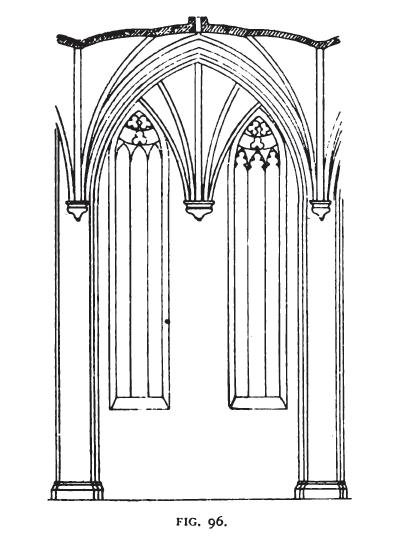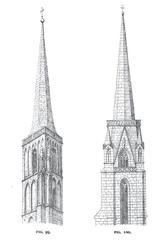
Collegiate Church Of The Holy Cross And St. Bartholomew In Wrocław
Collegiate Church of the Holy Cross and St. Bartholomew, Wrocław: Complete Guide to Visiting Hours, Tickets, Architecture, and History
Introduction
The Collegiate Church of the Holy Cross and St. Bartholomew (Kolegiata Świętego Krzyża i św. Bartłomieja) is one of Wrocław’s defining Gothic landmarks and a central monument on Ostrów Tumski, the city’s historic Cathedral Island. Renowned for its innovative two-level design, the church serves as a testament to the city’s medieval heritage, religious significance, and cultural vibrancy. This guide provides detailed insights into the church’s history, unique architecture, visitor information, and practical tips for an enriching experience in Wrocław.
Table of Contents
- Origins and Historical Background
- Architectural Features
- Cultural and Religious Significance
- Notable Historical Events
- Visitor Information
- Nearby Attractions
- Frequently Asked Questions (FAQ)
- Practical Tips
- Images & Virtual Resources
- Conclusion
- References
Origins and Historical Background
Founded at the close of the 13th century by Duke Henryk IV Probus of the Silesian Piast dynasty, the Collegiate Church of the Holy Cross and St. Bartholomew was conceived as a collegiate (rather than monastic) institution, reflecting the city’s prominence and its patron’s ambitions (polskakultura.com). Construction began around 1288, with the lower chapel dedicated to the Holy Cross and the upper chapel to St. Bartholomew, completed in the early 14th century.
Designed to accommodate both religious functions and dynastic memory, the church became a burial place for Silesian nobility and a site of political and liturgical importance. Over centuries, it endured war, religious upheavals, and periods of restoration, including significant post-World War II efforts that reinstated its High Gothic splendor after severe wartime damage (polskakultura.com).
Architectural Features
Double Chapel Structure
The church’s two-level layout is rare not only in Poland but across Europe. The lower church, dedicated to the Holy Cross, was used by the parish and features fortress-like walls and smaller windows, creating a solemn, contemplative atmosphere. The upper church, honoring St. Bartholomew, is accessed by a grand staircase and was traditionally reserved for the clergy and nobility. Here, ribbed vaults and expansive stained-glass windows create a luminous, uplifting space. This vertical arrangement drew inspiration from France’s Sainte-Chapelle and was considered a marvel of medieval engineering (Wirtualne Dziedzictwo).
Interior Highlights
- Vaulting: The upper church boasts star-shaped and net-patterned vaults, exemplifying High Gothic artistry.
- Stained Glass: Restored windows depict biblical scenes, saints, and Piast heraldry, suffusing the space with colored light.
- Altars and Polychromes: Surviving medieval polychromes and Baroque altarpieces reflect the church’s layered artistic legacy.
- Tombs: The church houses tombs of Silesian Piasts, including the founder, Duke Henryk IV Probus, with intricately carved sarcophagi and effigies.
- Foundation Tympanum: In the upper church, a 14th-century tympanum above the main portal depicts the Trinity and the church’s founders, symbolizing reconciliation and dynastic memory.
Exterior and Towers
The church’s red brick façade, pointed arches, buttresses, and twin towers capped with conical roofs are emblematic of Silesian Gothic style. The towers, especially the southern one topped by a 69-meter-high copper spire, are visible across the city and can be climbed for panoramic views (Travelling King). A copper heraldic eagle adorns the south gable, and the 1732 statue of St. John of Nepomuk marks the church’s connection to Central European traditions.
Cultural and Religious Significance
As a collegiate institution, the church was central to Wrocław’s spiritual, educational, and cultural life. It hosted a school, hospital, and served as a hub for ecclesiastical scholarship. The dual dedication—Holy Cross (symbolizing Christ’s sacrifice) and St. Bartholomew (patron of healing and protection)—highlights its layered spiritual meaning. Its multicultural role is evidenced by its historical service to German, Polish, and Greek Catholic communities, and by its association with notable figures such as Nicolaus Copernicus.
The church remains a venue for major religious ceremonies, concerts, and civic events, and is recognized as a Historic Monument of Poland (Wrocław Tourism). Its unique architecture and symbolism continue to inspire both locals and visitors.
Notable Historical Events
- Royal Patronage: Founded by Duke Henryk IV Probus, the church became a mausoleum for Silesian rulers and remained under papal jurisdiction.
- Reformation & Counter-Reformation: During the 16th century, the church resisted Protestant trends and became a stronghold of Catholic renewal, commissioning Jesuit art and Baroque furnishings.
- Wars and Restoration: The church suffered damage in the Thirty Years’ War, Napoleonic Wars, and especially during the 1945 Siege of Breslau. Restoration efforts have carefully preserved its Gothic character (polskakultura.com).
Visitor Information
Opening Hours
- Monday to Saturday: 9:00 AM – 6:00 PM (Check local listings for possible variations or closures during holidays and special events.)
- Sunday: 12:00 PM – 6:00 PM
Tickets and Admission
- Main Church: Free admission; donations are welcome to support restoration.
- Upper Church & Tower: Small fee applies for special areas and tower climb (typically 10–15 PLN; reduced rates for students and seniors).
- Guided Tours: Available in Polish, English, and German by prior arrangement; group rates may apply.
Accessibility
- Lower Church: Wheelchair accessible; ramps available at main entrance.
- Upper Church & Tower: Access via stairs only; no elevators.
Guided Tours and Events
- Tours: Offer insights into the church’s history, architecture, and symbolism.
- Events: Concerts, religious festivals, and exhibitions are held throughout the year—check the official calendar for details (Collegiate Church Official Page).
Getting There
- Location: Ostrów Tumski, a short walk from Market Square and Tumski Bridge.
- Public Transport: Tram lines 4, 10, 20; nearby stops and clear pedestrian signage.
- Parking: Limited; best accessed on foot or by public transport.
Nearby Attractions
- Cathedral of St. John the Baptist: Wrocław’s principal cathedral with panoramic tower views.
- Church of St. Giles: The city’s oldest preserved church.
- Archbishop’s Palace: Occasional exhibitions and historical displays.
- Tumski Bridge: Picturesque, especially at sunset.
- Sand Island and Malt Island: Scenic walks and additional historic sites (Travelling King).
Frequently Asked Questions (FAQ)
Q: What are the church’s opening hours?
A: Monday–Saturday: 9:00 AM–6:00 PM; Sunday: 12:00 PM–6:00 PM. Check official sources for updates.
Q: Is there an admission fee?
A: Main church admission is free; fees apply for the upper church and tower.
Q: Are guided tours available?
A: Yes, in several languages; book in advance via the official website.
Q: Is the church accessible for those with disabilities?
A: The lower church is accessible; the upper church and tower are stair-access only.
Q: Can I take photos inside?
A: Photography is allowed without flash; tripods may require permission, especially during services.
Q: When is the best time to visit?
A: Early mornings, late afternoons, and shoulder seasons (April–June, September–October) offer fewer crowds and pleasant weather.
Practical Tips
- Dress modestly: Shoulders and knees covered, especially during services.
- Tower climb: Over 300 steps; not suitable for those with mobility concerns or acrophobia.
- Quiet hours: Attend early or late for a more contemplative experience.
- Check events: Musical performances and festivals offer unique experiences.
- Combine visits: Explore Ostrów Tumski’s other churches and historic streets.
Images & Virtual Resources
Alt tags are optimized for accessibility and search engines.
Conclusion
The Collegiate Church of the Holy Cross and St. Bartholomew is a cornerstone of Wrocław’s spiritual and architectural landscape. Its rare double chapel design, Gothic artistry, and powerful historical narratives offer visitors an unforgettable window into the city’s heritage. Whether you seek contemplative beauty, history, or vibrant community events, the church delivers a deeply rewarding experience.
Plan your visit with the most recent information from official tourism sources, download the Audiala app for in-depth audio guides, and explore more about Wrocław’s rich history through related articles and walking tours.
References
- Architectural Wonders of Poland: Visiting the Collegiate Church of the Holy Cross and St. Bartholomew in Wrocław, 2025, polskakultura.com
- Ostrow Tumski: What to See on Wroclaw’s Cathedral Island, 2024, Postcard Poland
- 48 Hours in Wroclaw: 2 Day Itinerary, Travelling King, 2024
- Collegiate Church of the Holy Cross and St. Bartholomew, Wirtualne Dziedzictwo, 2025
- Official Wrocław Tourism Website, 2025
- Collegiate Church Official Page, 2025












































